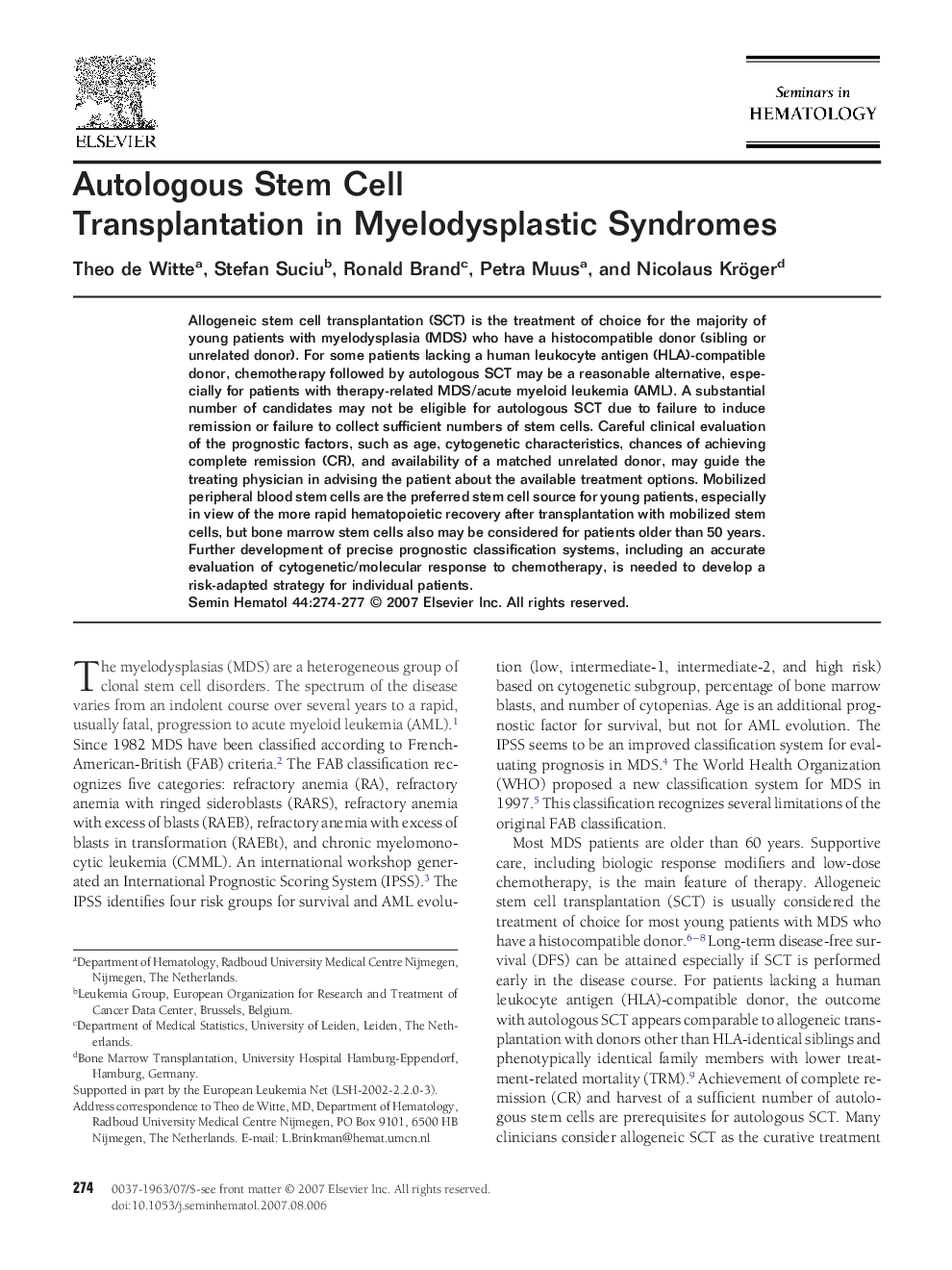| Article ID | Journal | Published Year | Pages | File Type |
|---|---|---|---|---|
| 3333970 | Seminars in Hematology | 2007 | 4 Pages |
Abstract
Allogeneic stem cell transplantation (SCT) is the treatment of choice for the majority of young patients with myelodysplasia (MDS) who have a histocompatible donor (sibling or unrelated donor). For some patients lacking a human leukocyte antigen (HLA)-compatible donor, chemotherapy followed by autologous SCT may be a reasonable alternative, especially for patients with therapy-related MDS/acute myeloid leukemia (AML). A substantial number of candidates may not be eligible for autologous SCT due to failure to induce remission or failure to collect sufficient numbers of stem cells. Careful clinical evaluation of the prognostic factors, such as age, cytogenetic characteristics, chances of achieving complete remission (CR), and availability of a matched unrelated donor, may guide the treating physician in advising the patient about the available treatment options. Mobilized peripheral blood stem cells are the preferred stem cell source for young patients, especially in view of the more rapid hematopoietic recovery after transplantation with mobilized stem cells, but bone marrow stem cells also may be considered for patients older than 50 years. Further development of precise prognostic classification systems, including an accurate evaluation of cytogenetic/molecular response to chemotherapy, is needed to develop a risk-adapted strategy for individual patients.
Related Topics
Health Sciences
Medicine and Dentistry
Hematology
Authors
Theo de Witte, Stefan Suciu, Ronald Brand, Petra Muus, Nicolaus Kröger,
